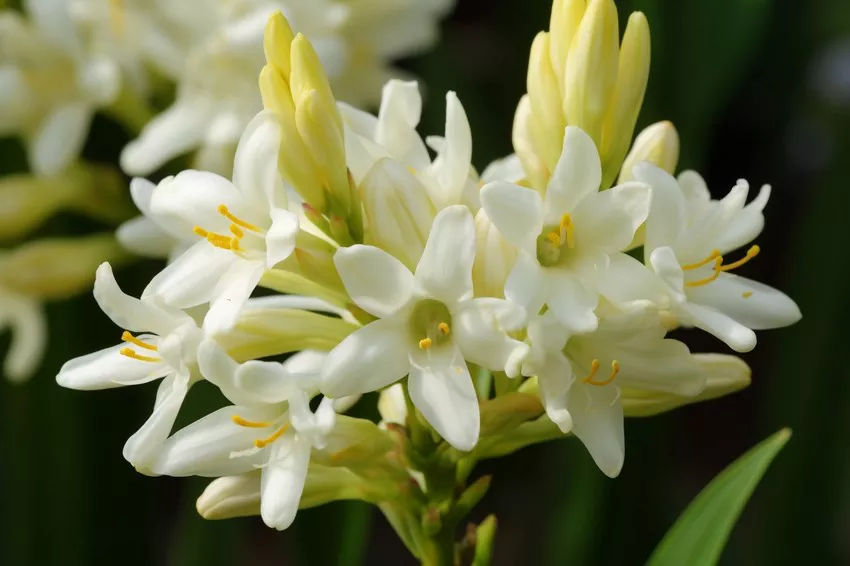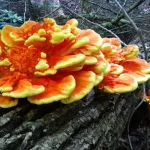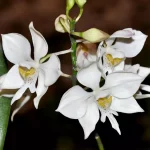The tuberose flower is a captivating and fragrant bloom that carries deep symbolism and meaning across various cultures. Known for its enchanting aroma and striking appearance, the tuberose has been associated with a range of emotions, spiritual beliefs, and traditions. This article delves into the rich symbolism and meanings of the tuberose flower, exploring its significance in different contexts.
Tuberose Flower Symbolism
The tuberose flower, with its elegant white petals and intoxicating scent, symbolizes several profound concepts. Its symbolism is deeply intertwined with themes of beauty, sensuality, and purity.
Beauty and Elegance
The tuberose’s visual appeal is undeniable. Its white blooms, which can be both single or double, exude a sense of purity and sophistication. The flower’s pristine color and lush form have led to its association with beauty and elegance. In many cultures, the tuberose is seen as a symbol of refined beauty and grace.
Sensuality and Passion
The strong, sweet fragrance of the tuberose makes it a powerful symbol of sensuality and passion. Its scent is often used in perfumes and aromatherapy, evoking feelings of desire and romance. The flower’s association with sensuality can be traced back to its use in various ceremonial and spiritual practices where it is believed to enhance love and attraction.
Purity and Innocence
Despite its strong fragrance, the tuberose’s white color is often linked to purity and innocence. In many cultures, white flowers are symbols of new beginnings, purity, and a fresh start. The tuberose, with its pure white petals, reflects these ideals and is often used in weddings and other ceremonies that celebrate purity and new beginnings.
Tuberose Flower Meaning
The meaning of the tuberose flower extends beyond its physical appearance and fragrance. It carries significant cultural and emotional connotations that are worth exploring.
In Cultural Traditions
In various cultures, the tuberose has been revered for its symbolic meanings. In Hinduism, for instance, the tuberose is associated with divine beauty and is often used in religious ceremonies and offerings. In Mexican culture, the tuberose is known for its role in Day of the Dead celebrations, where it is used to honor and remember loved ones who have passed away.
In Spiritual Practices
The tuberose is also significant in spiritual practices. Its fragrance is believed to have calming and uplifting effects, making it a popular choice for meditation and relaxation. The flower’s presence in spiritual settings often symbolizes a connection to higher realms and a quest for inner peace.
Tuberose Flower Color Meaning
The color of the tuberose flower adds another layer to its symbolism. While the most common color is white, there are variations in the shades and hues of the flower.
White Tuberose
White tuberoses are the most prevalent and symbolize purity, innocence, and new beginnings. The pure white petals reflect a sense of calm and tranquility, making them ideal for occasions that celebrate these themes.
Other Colors
While less common, tuberoses can occasionally be found in shades of pink or cream. Pink tuberoses may symbolize admiration, gratitude, and affection, while cream-colored varieties can represent elegance and sophistication. The variation in color adds depth to the flower’s symbolism, allowing it to convey a range of emotions and meanings.
See Also: Bird of Paradise Flower Spiritual Meaning and Symbolism
Tuberose Flower Meaning in the Bible
In biblical contexts, the tuberose flower does not have a specific mention or direct symbolism. However, flowers in general are often used as metaphors for spiritual concepts and virtues. The tuberose’s qualities of purity, beauty, and grace align with biblical themes of divine creation and the natural world’s splendor.
Symbolism in Biblical Texts
Flowers in biblical texts are often associated with the beauty of creation and the divine’s handiwork. The tuberose, with its stunning appearance and pleasant fragrance, can be seen as a reflection of the beauty and purity described in biblical passages. Its symbolism can be linked to the broader spiritual themes found in the Bible, such as grace, renewal, and the divine presence in the natural world.
Tuberose Flower Meaning in Tattoos
The tuberose flower is a popular choice for tattoos due to its aesthetic appeal and symbolic significance. Its meaning in tattoos can vary depending on the individual’s intent and the design chosen.
Symbolism in Tattoo Art
In tattoo art, the tuberose often represents beauty, sensuality, and personal transformation. Its intricate petals and vibrant appearance make it a visually striking choice for body art. People may choose tuberose tattoos to symbolize their journey, growth, or a significant life event.
Personal Significance
For many, a tuberose tattoo holds personal significance related to their experiences and emotions. It may represent a loved one, a milestone, or a cherished memory. The flower’s association with sensuality and passion also makes it a popular choice for tattoos that celebrate these aspects of life.
Tuberose Flower Meaning in Love
The tuberose flower’s connection to love is profound and multifaceted. Its sensual fragrance and elegant appearance make it a powerful symbol of romance and affection.
Romantic Symbolism
In romantic contexts, the tuberose is often associated with deep, passionate love. Its strong scent and beautiful blooms evoke feelings of desire and connection, making it a fitting symbol for romantic relationships and engagements. The flower’s presence in a romantic setting can enhance the atmosphere and convey a message of intense affection.
Gifts and Occasions
Tuberoses are frequently used in floral arrangements for special occasions such as anniversaries and Valentine’s Day. Their association with love and passion makes them a meaningful gift for expressing deep feelings and celebrating romantic milestones.
Tuberose Flower Meaning in Death
The tuberose flower also holds significance in the context of death and remembrance. Its use in funerals and memorials reflects its association with honoring and commemorating those who have passed away.
Symbolism in Funerals
In funerals, the tuberose is used to symbolize the purity and beauty of the deceased’s spirit. Its presence in floral arrangements can offer comfort and convey a sense of reverence for the departed. The flower’s association with purity and elegance helps create a solemn and respectful atmosphere.
Cultural Practices
In some cultures, the tuberose is specifically used to commemorate the dead. For example, in Mexican traditions, tuberoses are featured in Day of the Dead celebrations as a way to honor and remember loved ones. The flower’s role in these practices underscores its significance in the cycle of life and death.
Conclusion
The tuberose flower is a symbol of beauty, sensuality, and purity, with rich meanings that span various cultural and emotional contexts. From its elegant appearance and fragrant allure to its associations with love, death, and spiritual practices, the tuberose holds a special place in the world of symbolism. Its presence in tattoos, ceremonies, and everyday life continues to reflect its deep significance and enduring appeal.
Whether used in floral arrangements, body art, or cultural rituals, the tuberose remains a powerful symbol of the complex and multifaceted nature of human experience.
Related topics:













